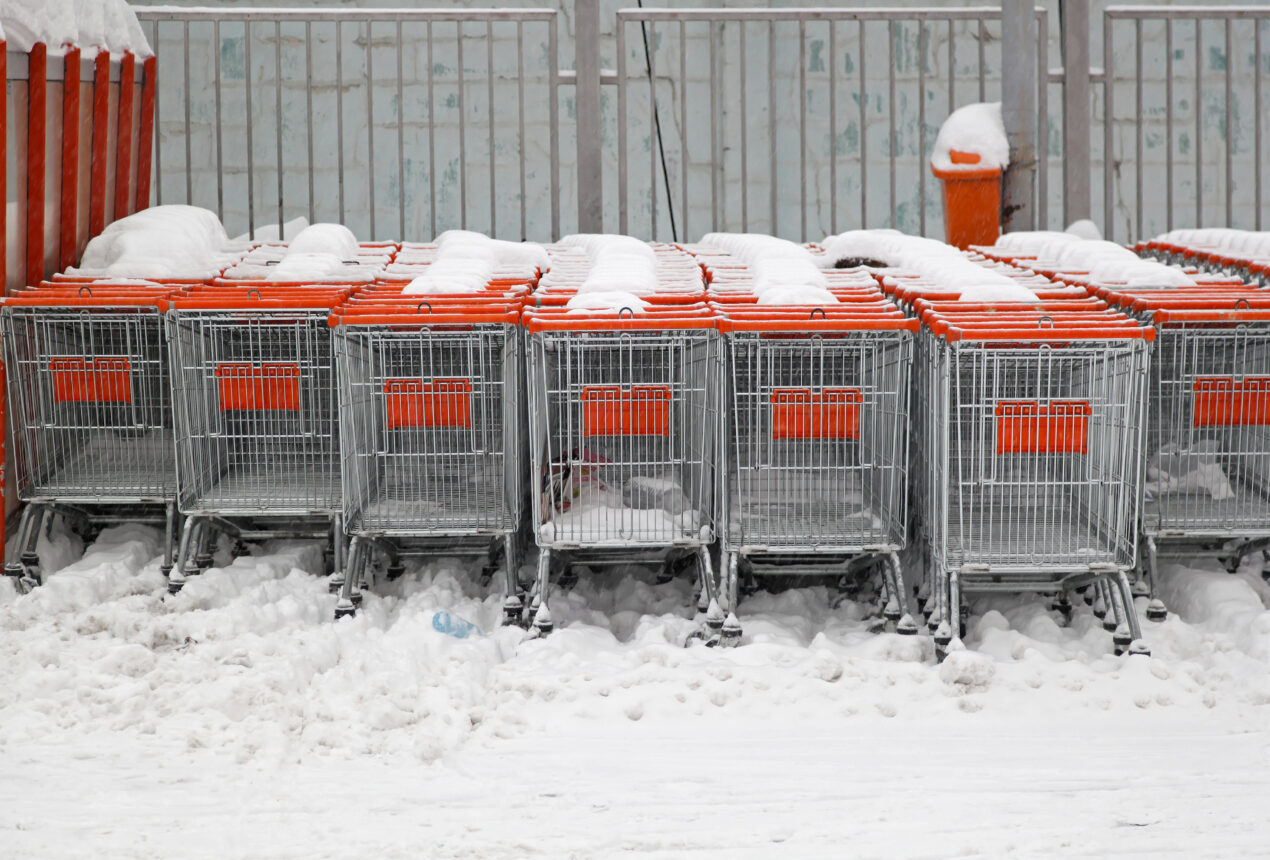Weather is often seen as a threat to the retail industry. The innate correlation between weather and consumer buying patterns is undeniable, with small changes in weather potentially having a large impact on day-to-day sales and operations.
However, advancements in weather predictive analytics are changing opinions on the weather – transforming disruption into an opportunity.
Consumer Demand: Finding New Marketing Opportunities
We all dream of a white Christmas. However, the odds of that happening aren’t always guaranteed. Looking back to previous years, the United Kingdom only experiences snow or sleet falling an average of 3.9 days in December, compared to 5.3 days in January, 5.6 days in February and 4.2 days in March.
It can be difficult for businesses to prepare their operations to accommodate the unpredictability of a UK winter. This is especially prevalent for the retail industry. With the wide variety of situations that changing weather patterns provide, it is difficult for retailers to prepare and optimise their storefronts to accommodate for changes in temperature and/or rainfall.
For example, the previous Christmas period provided retailers with several challenges. With highs of 12° at the start of December making way for lows of -1°, businesses saw product category demand fluctuate from day to day.
With predictive weather analytics, custom data sets, forecasts, and alerts, retailers are able to better understand and plan for the impact that fluctuating weather conditions will play on product demand, allowing them to optimise production and store traffic patterns; turning the weather from a source of disruption to one of opportunity, thus maximising sales.
For example, with custom data sets and forecasts, a jumper manufacturer could look to increase their production output alongside changes in weather, receiving personalised alerts when temperatures fall below a particular level. With increases in demand imminent, marketing departments could automate marketing activities to increase activity and spend alongside changes in the business’ supply.
Preventing Supply Chain Disruption
Those in the retail industry understand that the weather can have a significant impact on many key areas within the supply chain – with 47% of respondents from one survey ranking weather as the third most important factor external to their business, which drives consumer demand.
However, despite this, only 16% of those surveyed used commercial weather data, with only a further 19% relying on free data. Without accurate forecasts, changes in weather patterns can cause several issues for the retail industry’s supply chain.
Extreme weather conditions, such as snow, ice and heavy rain, can make it impossible for delivery trucks to transport products to distributors and retailers. Even in cases where roads can still be used in spite of adverse weather conditions, traffic intensity is severely increased. Changes to expected delivery times can have notable impacts on the supply chain, and operational efficiency for retailers.
Changes in weather patterns, especially those that are likely to significantly impact consumers, can lead to frenzied surges in demand. However, with some retailers failing to plan for these changes, they are unable to restock their shelves at precisely the times when consumers are likely to buy in quantity.
Retailers in Cornwall fell victim to this product demand surge in March 2018, with the return of the cold wave that swept Great Britain, aptly titled the ‘Beast from the East’. Supermarkets across the South-West began running low or even out of essentials such as bread and milk, as shoppers started panic-buying in preparation for the icy conditions.
In some cases, this led to shops restricting customers to two loaves of bread each – leading to reports of supermarket staff in the South West facing abuse from customers. Not only do delivery issues caused by weather have serious impacts on the supply chain of the retail industry, but overall customer experience is also affected, which can lead to reduced customer retention and, ultimately, reduced revenue for retailers.
Retailers utilising weather data especially paid for data sets can better prepare for changes in weather conditions, with 81% of respondents in a recent survey who use weather data in their planning strategy finding improved on-shelf availability for their customers. Respondents also benefited from improvements in sales forecasts, reduction of waste and enhanced customer service, all key factors in improving business efficiency and profitability – important issues for supply chain managers.
Weather: Disruptor or Opportunity?
With technological advancements in how we can generate, utilise and benefit from data within the supply chain in recent years, the argument towards weather as a disruptor for the retail industry becomes less and less valid.
With custom weather data sets, forecasts, and alerts, businesses, especially those in retail that rely on optimal delivery and production efficiencies, should look at the weather as an opportunity. With the use of weather data still at a minimum, the insights gained can create a serious competitive advantage for your organisation – especially in a market that has become accustomed to on-demand service.
As we all know, change is the only consistent when it comes to weather. However, with predictive analytics leading to changes in supply chain routing and on-time delivery, fog on the roads no longer becomes a problem, but instead, a ‘mist’ opportunity.




